Yoann Richomme: Pinching himself after victory in The Transat CIC
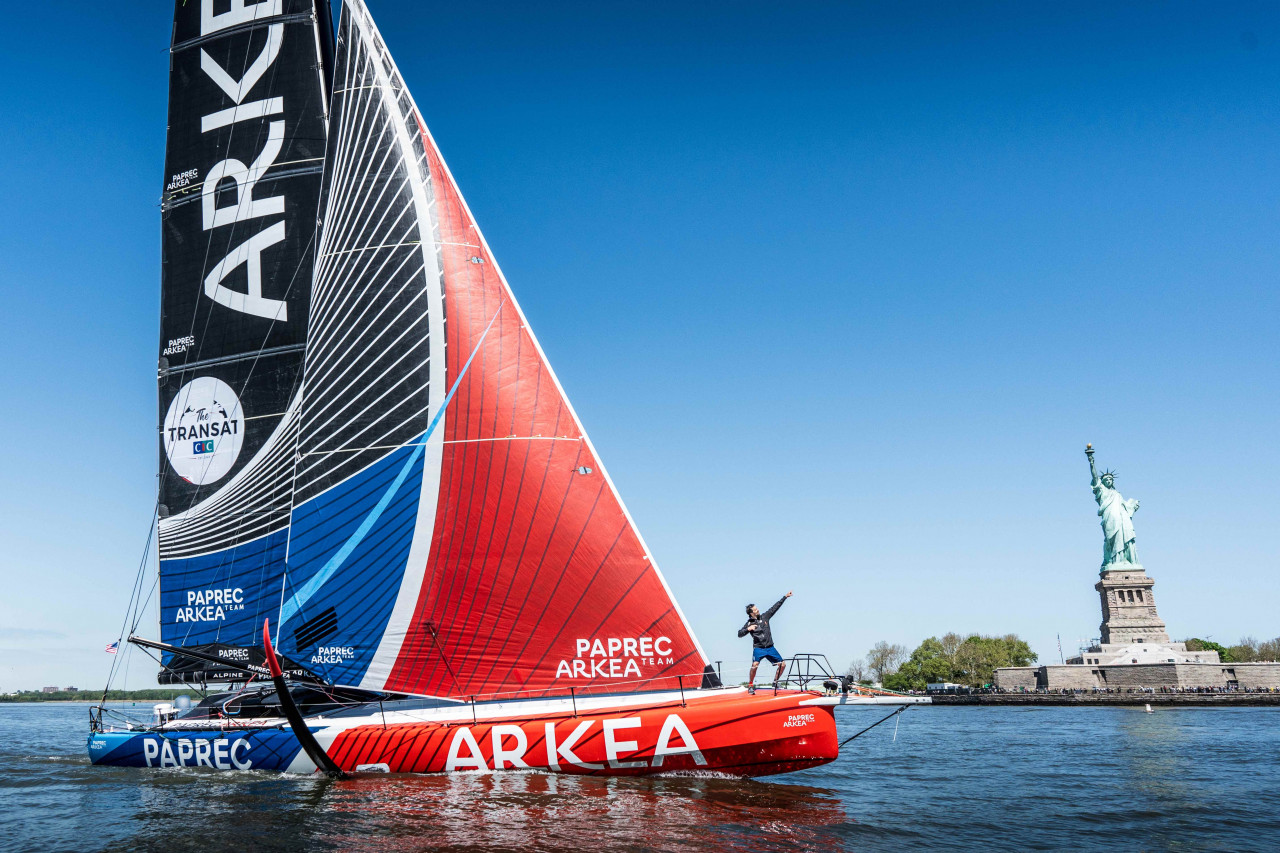
Many of the IMOCA skippers in The Transat CIC have been dreaming about completing the race and gliding past the Statue of Liberty after the finish, and earlier today race winner Yoann Richomme did exactly that.
As his red and blue flying machine in the livery of Paprec Arkéa made her way towards New York City under full sail and a cloudless blue sky, her skipper stood on the bow enjoying every moment of one of the most iconic landfalls in world sailing.
“It’s a bit surreal to arrive here, especially since it feels like we left Lorient just yesterday,”explained 40-year-old Richomme, a two-time Solitaire du Figaro winner, who also won the solo transatlantic Retour à La Base in the IMOCA Class at the end of last year.
It adds up to a formidable impact on this fleet by a sailor who also achieved great success in Class40s and is bringing the same recipe to IMOCA – a fast, well-sorted boat and a relentlessly competitive approach in the cockpit from an individual who exudes competence and a cool head in all that he does.
“It’s going to take time to sink in,'' he said of a victory that Richomme set up last Thursday when he overtook early leader Charlie Dalin on MACIF Santé Prévoyance. “It proves that we’ve done the good work and we’re happy with what we’ve achieved. What’s reassuring is that this race was a fairly close exercise to the Vendée Globe in terms of weather and the sequences we’ve had. I wasn’t expecting it because it is not what usually happens (on this transat),” he added.
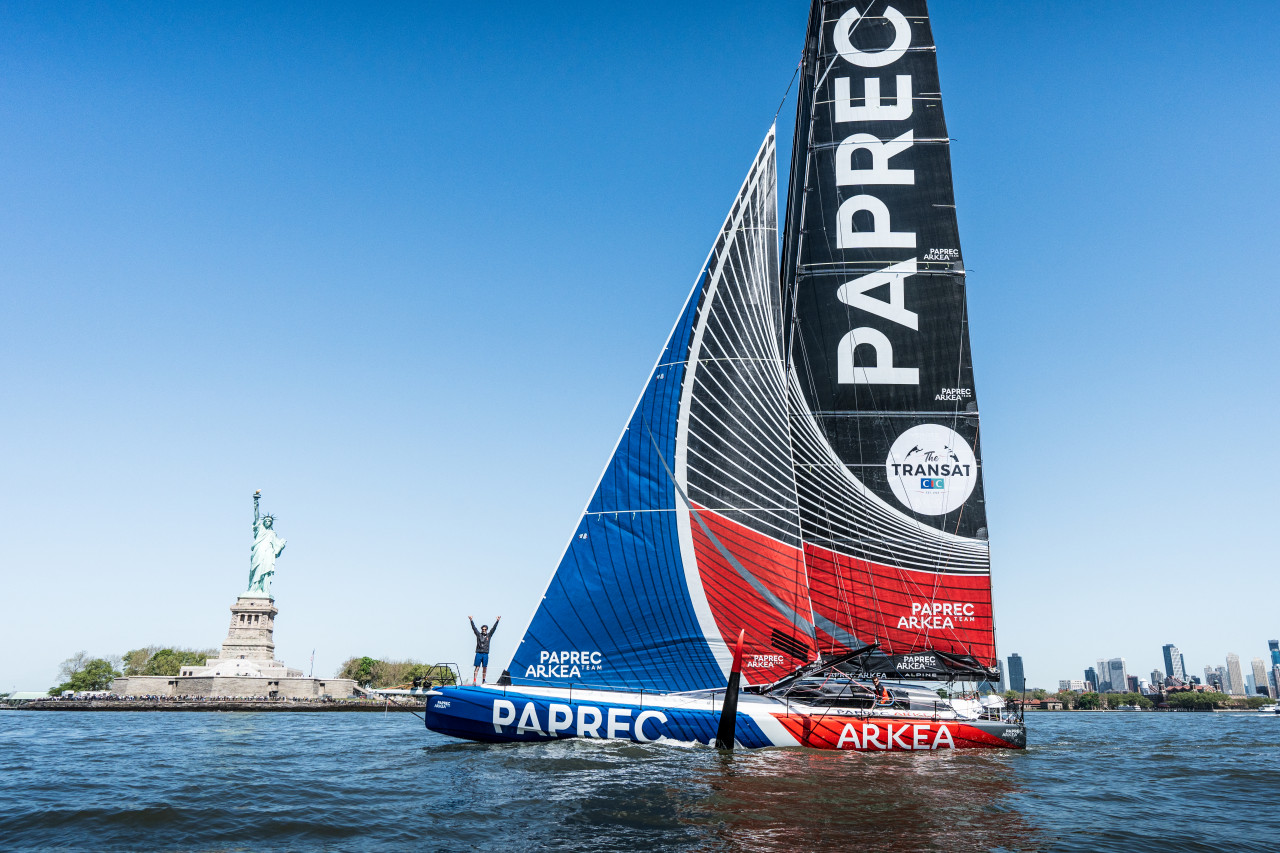 © Guillaume Le Corre / polaRYSE / Paprec Arkea
© Guillaume Le Corre / polaRYSE / Paprec Arkea
You get the feeling that Richomme is pinching himself. It’s almost as if he can’t quite believe he has really just won two consecutive solo transatlantic races in the top foiling offshore monohull Class in world sailing. “Seeing the level of the fleet, it feels like winning is almost unattainable,” he remarked. “And the level of preparation we need, the reliability of the boats, it’s very easy to break stuff and be out of the game.”
Richomme says this race has demonstrated that his boat copes with difficult sea-states extremely well. That is something he reckons that can also be said of second-placed Boris Herrmann’s Malizia-Seaexplorer and Sam Davies’s Initiatives-Coeur that came in third. “The boat is a 4x4 – it’s not totally uncomfortable, it’s made for it and I’m not sure I’m experiencing the same story as everyone else. The design is made for (tough seas) – it handles the sea well and there are no big crash-stops, so life on board is more enjoyable,”he said.
Behind him Herrmann had been sailing an impressive race and crossed the line just two hours, 20 minutes behind Richomme after eight days, nine hours and 12 minutes at sea. It was his best solo performance IMOCA though he felt his fifth place in the last Vendée Globe still trumps it.
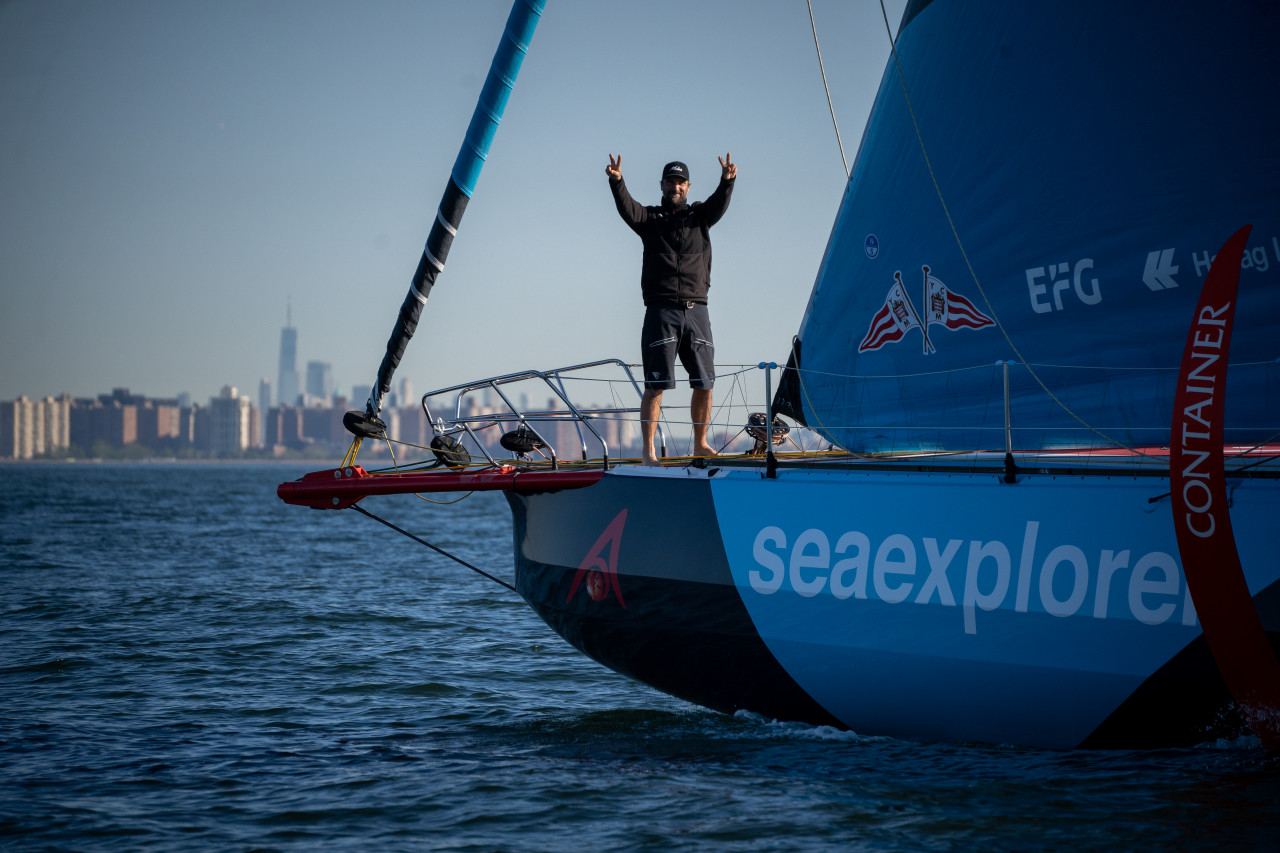 © Marie Le Floch / Team MALIZIA
© Marie Le Floch / Team MALIZIA
Just as Richomme had said, Herrmann remarked on the high pace of this race across the north Atlantic, that saw everything from tough upwind sailing to power-reaching and big downwind conditions. “This one-week race was very intense and gave us a glimpse of what to expect this winter,” said the 42-year-old German skipper.
He reached New York very happy with a boat which has been much optimised during the course of its short life that included participation in last year's The Ocean Race. “I think my boat is pretty good, it performs very well in these conditions where there’s a bit of breeze,”said Herrmann. “Now I’ll have to convince my team not to change anything else on the boat! We have to make do with what we have, and ensure it’s as reliable as possible, so the boat will be like this in Les Sables d’Olonne on November 10th,”he added.
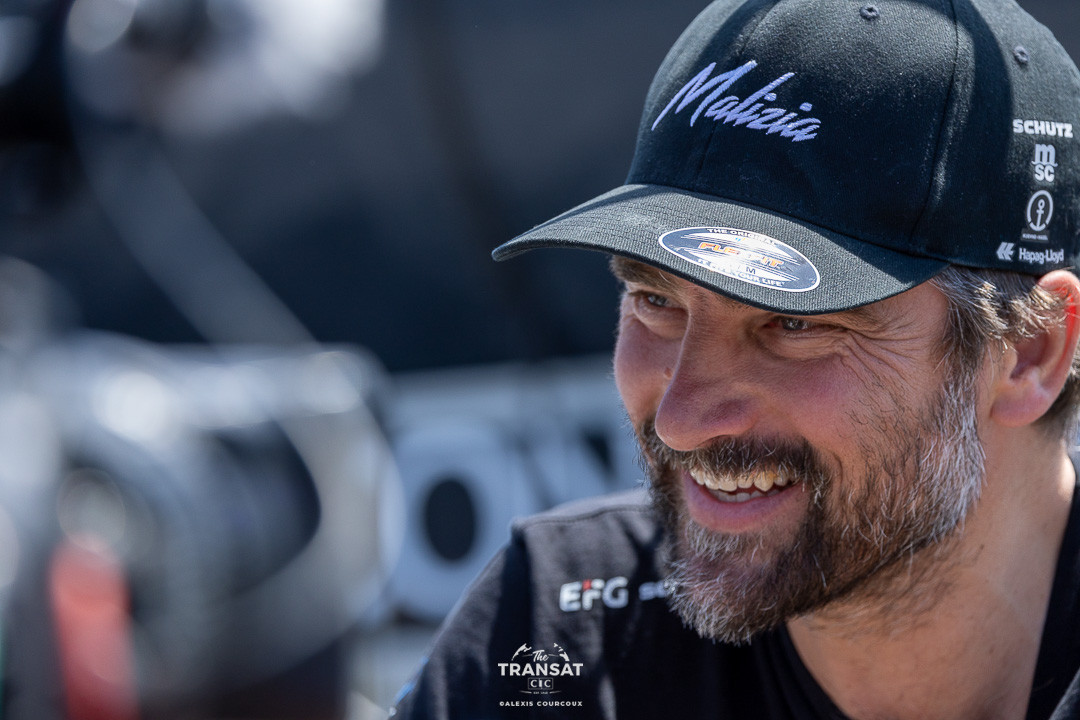 © Alexis Courcoux / The Transat CIC
© Alexis Courcoux / The Transat CIC
Herrmann was delighted to see an international podium and a mix of architects represented by the top - three finishers of this historic race, ranging from VPLP for his boat, Sam Manuard for Davies’s IMOCA and Koch/Finot-Conq for Richomme’s foiler.
Another sailor for whom this was an unprecedented solo performance was Davies, who is continuing her rich vein of form in her new boat after a strong 2023 double-handed season and sixth place in the Retour à la Base. It seems her team has now almost fully optimised Initiatives Coeur, while Davies seems more confident and happy with her sailing than ever, as she continues her preparations for her fourth Vendée Globe.
She too talked about intensity in this race. “I was trying to find the word to describe it in French earlier,” she told the Class, “relentless is a good word for it. There was literally no time to catch your breath. I was just going round the boat thinking ‘I didn’t use that, or that, or that.’ It wasn’t that I didn't want to – there just wasn’t time and it was really tiring in that respect, because everything was changing a lot.”
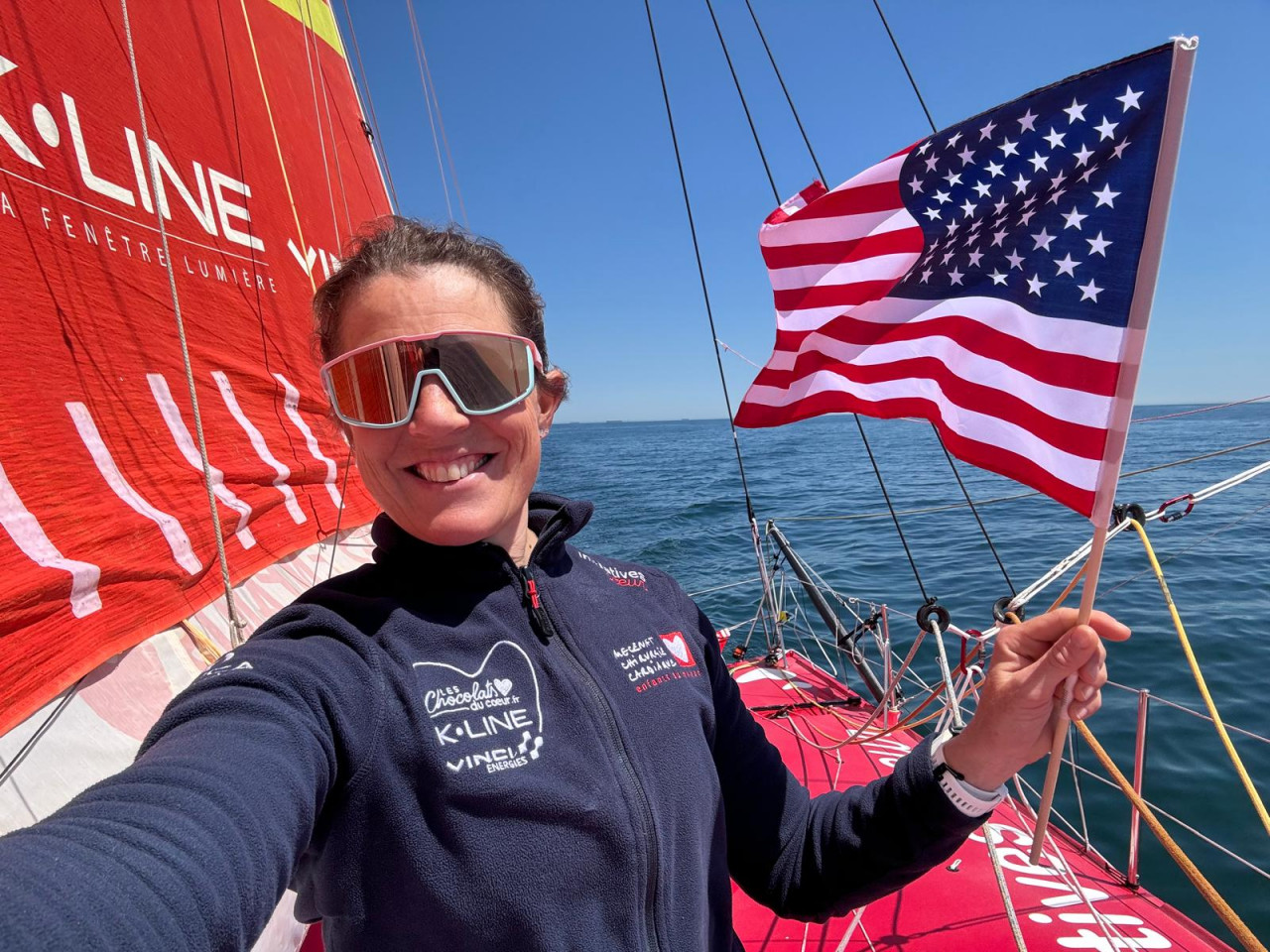
Davies said her race got off on the right foot with a superfast start from Lorient. “The boat was a rocketship,” she said. “It wasn’t really classic conditions for this boat – quite light winds and marginal foiling, but since we’ve changed the foils that has made a huge difference.”
The 49-year-old English skipper was so surprised by her boats’ pace, she even mentioned it to her shore team. “I sent a message to them. I was like ‘have you put a turbo on here without telling me?’” she recalled, laughing. “I did a few of the right things but the boat was fast, so that helped.”
It is clear that Davies’s long experience was invaluable in this race when she barely put a foot wrong on strategy and navigation. She said at the finish that she made a point of trying to sail her own race and it proved a useful approach.
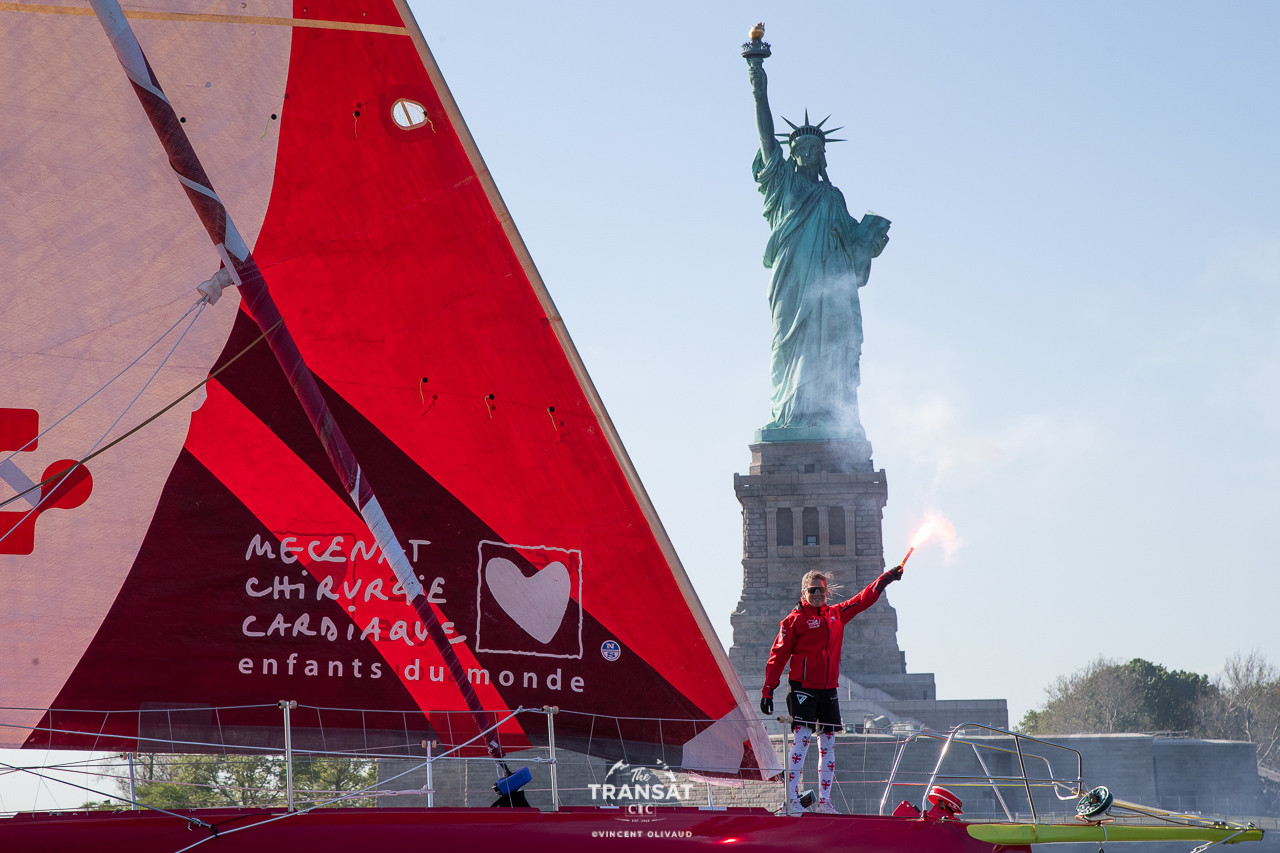 © Vincent Olivaud / The Transat CIC
© Vincent Olivaud / The Transat CIC
“Throughout the whole race, I was determined not to let the presence of the fleet make me stressed about performance, or making decisions or going the right way,” she said. “I was not going to sail the way of somebody else, and instead do it how I think I should. Obviously I could not completely ignore everyone because it was a race, but sometimes the stress of worrying about being in the right place relative to the others, and whether you’ve done it right or not, can wear you out. And then you make mistakes because you’re tired. So I was determined to watch where I was, but not let that freak me out or burn me out, so that helped too.”
Davies says that, but for a broken furling line on her masthead gennaker and a problem with her tiller, she could have been closer to Herrmann than the almost three-hour delta between them at the finish. But it has still been a tremendous performance from a sailor now full of confidence for the Vendée Globe.
“I said before this race – and I hope I am not jinxing myself – but if me and my boat make it to New York, and I push how I want to push and make it there more or less in one piece, for me that’s good for the Vendée Globe – that’s good to go,” she said.
Ed Gorman
Teams info
After a stunning 2025 season Sam Goodchild is the IMOCA Globe Series Champion for the second time
After a long season at the top of the IMOCA fleet that featured three race wins, Great Britain’s Sam Goodchild is for the second time in three years the IMOCA Globe Series Champion.
•••Quel rôle peut jouer la course au large dans la transformation du transport international ? Avec Pie…
Pour ce 10ᵉ épisode de Transitions, enregistré au Havre lors du départ de la Transat Café L'Or, nous recevons Jeremy Pochman, PDG de 11th Hour Racing, et Pierre-Antoine Morvan, responsable du pôle course au large et supe…
•••